In dance music circles it's common enough to hear the phrase "music saved my life," but in the case of Alex Rosner, it literally did. Upon arriving at Auschwitz, his father, Henry, was recognized as a famous violinist. He was regularly asked to play for the commandant, which he did on the condition that his son wouldn't be harmed. Miraculously, they hung on until the Allied liberation, and emigrated to New York shortly after.
"I arrived when I was 11 years old. I didn't read or write in any language. I didn't speak English. But I wanted to be an American very badly, so I jumped into the melting pot. I went to the movies, watched cartoons, and looked at comic books. I played marbles with the kids on Steinway Street, and in one year I spoke perfect English," Rosner recalls.
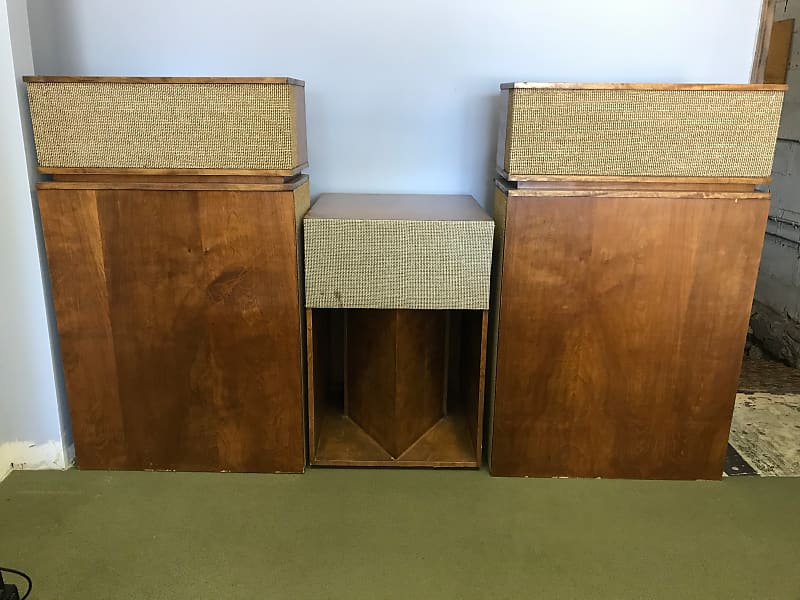
Rosner grew up to be an engineer, and took a defense industry job, but lived a parallel life as a hi-fi enthusiast around the time the term was being coined. As a student he'd built his own speakers from cardboard, and went on to design a soundsystem for the pavilion at the '64 World's Fair, but it was a chance encounter, while dining, that changed the course of his life. The club's system sounded so bad he gave the owner his card, and before he knew it he was redesigning it.
Not long after, he made his passion his full-time career. He read Paul Klipsch's audiophile dispatches, The Dope From Hope, and began repping the products. (Klipsch had debuted his world-famous Klipschorn—arguably the first real high-fidelity speaker—in Hope, Arkansas, around the time Rosner arrived in the US.)
He would lug heavy amps to clients, sometimes on foot, and build things if they didn't exist. As two turntable systems were developing he realized mixers didn't have the cuing features we take for granted these days, so he modified a Bozak unit, and called it "Rosie" after its red paint job. (Modular synth fans will recognize that the name lives on in Make Noise's mixer module of the same name, which also has a cuing feature.)
One on-the-job lesson followed another, and his expertise grew, but what would become his philosophy was forged one night when he got an emergency call at 1 am, which wasn't unusual. The system at Ginza, a club owned by his friend Robert Chiu, had failed, the patrons immediately left, and he was hemorrhaging money. "Mr. Chiu knew his stuff. He had two Altec speakers, a McIntosh MC275 amplifier, two Thorens TD124 turntables, and a mono Altec 1567A mixer. It sounded terrific."
The only problem was it was all driven by a single amp, which proved to be its Achilles heel on that particular night. Rosner quickly fixed it, and then had a vision:
"I was crossing the desert in a chariot. Arrows were coming at me from all directions. If I stop, I'm dead. If a horse trips, I have to be able to cut it loose and still have enough to keep going. I've gotta have redundant, concentric wheels, in case one breaks. I cannot stop under any circumstances. The chariot is the soundsystem. It has to be designed in such a way that it can never fail, because the patrons leave and, you know, they may never come back. What I learned that night was the most important lesson of my disco career."
David Mancuso moved to New York in the early '60s at the dawn of a major cultural revolution, immersing himself in all the city had to offer, far beyond what was typical. He explored the better-known hippie enclaves, but also worked his way uptown at a time few white people did. He studied the music he was hearing at rent parties in Harlem, and went to live performances, feeding his insatiable curiosity.
In the mid-'60s he became enamored of Timothy Leary, attended his lectures, paying particular attention to his Tibetan Book of the Dead–inspired text, The Psychedelic Experience. Eventually he ended up deeper in Leary's circle, and was invited to private parties at his "League for Spiritual Discovery" offices.
Two of the most meaningful things in Mancuso's life, at the time, were gathering with friends to enjoy music as a group and experimenting with psychedelics, and the two paired very well. As the nuances of music became increasingly more important to him, he fell into the orbit of fellow enthusiast Richard Long, purchased some hi-fi equipment from him, including some Klipschorns, and a friendship ensued.
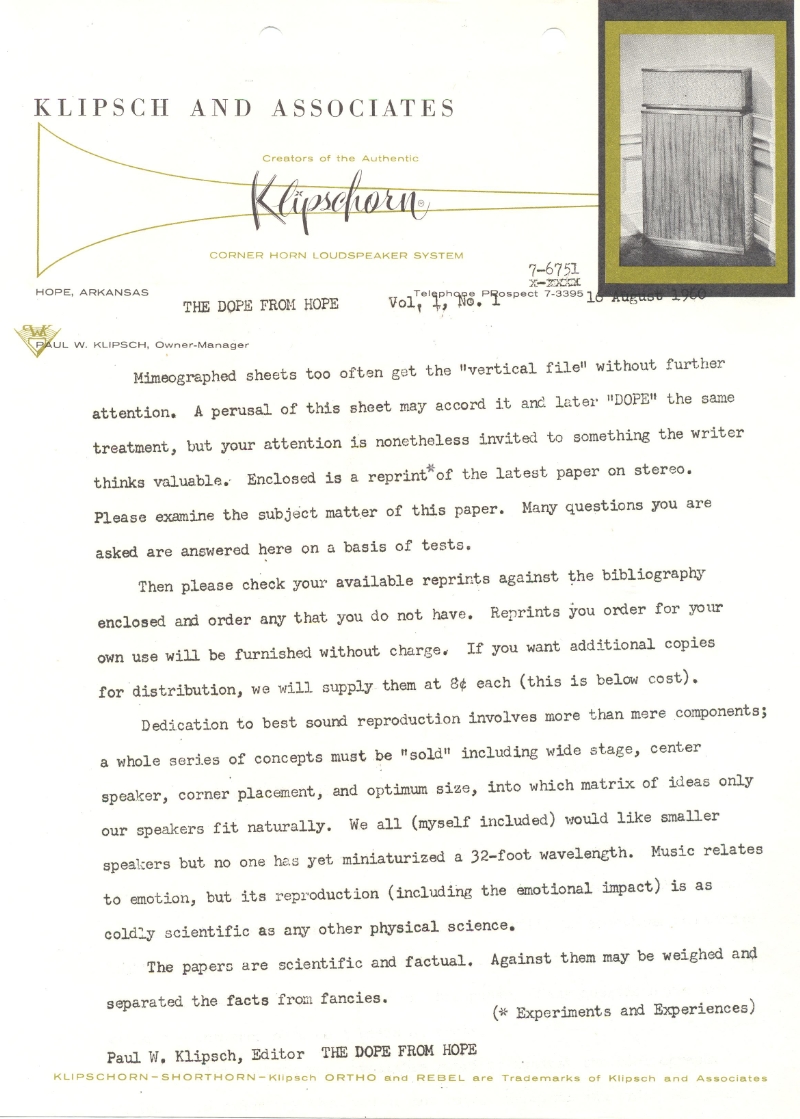
Like Rosner, Mancuso was enthusiastic about The Dope From Hope. According to DJ Colleen "Cosmo" Murphy, "He would read those quite religiously, and shared many of Paul Klipsch's opinions."
Rosner recalls first meeting Mancuso: "I had become a Klipsch dealer. I think he may have had two Klipschorns already [referring to the speakers he'd bought from Long]. I sold him some Cornwalls and some Model H series. In the early days of hi-fi, when you had two speakers in stereo and they were far apart, Klipsch recommended a center channel. There were several techniques for achieving this, but one just used a special transformer, and you stole a little bit of signal from the left channel and a little bit from the right. It made the impedance corrections. The problem was you couldn't adjust the center channel volume."
It didn't take Rosner long to figure out he wasn't dealing with a typical client: "With David it was less about his technical knowledge. He innately understood the acoustic problem, more in his heart than mind. We couldn't talk dBs, but he had a very clear understanding of what was needed to solve a problem, and I'd fix it technically. If he didn't like it, we'd try something else. My ego wasn't that big, and I was learning too."
Of course rooms tend to present challenges that aren't easily remedied. "The first thing you have to do is accept the space the way it is," Rosner says. "Most of the time it's your enemy, not your friend. I could go into a room and tell if it was good, fair, or terrific, but a few times I've had to just tell the client it can't work. You're not going to hire an acoustic consultant like Al Fierstein and spend $100,000 fixing it."
On Valentine's Day, 1970, Mancuso had what was officially the first Loft Party. Dubbed Love Saves the Day as a lysergic nod, it ostensibly was a weekly rent party intersecting with the counterculture but, in actuality, it was much more profound. By invitation only, people of all different races, genders, sexual orientations, and backgrounds gathered to listen and dance to music, often unfamiliar to them, but carefully selected for its special qualities, from fidelity to uniqueness, presented to them on a system of unparalleled quality.
Modern system designer Craig "Shorty" Bernabeu considers it "complete genius the way Alex and David designed it around a huge high-end consumer system. They also had to take into account necessary headroom, and how much time it would be used per night, which would be at least three times what a consumer used in a week."
The individual elements were by no means new. Soundsystem parties were a huge part of Jamaican culture, though fidelity wasn't really the focus. San Francisco's "Acid Tests" were designed to delight the senses and encourage free thought. Places like The Sanctuary, on W. 43rd St., were gay clubs, but also sites of some cultural crosspolination, unlike the bath houses that preceded it. The Loft, however, was a combination of those things, and more, providing an excellent-sounding safe space, and not just as defined in modern parlance.
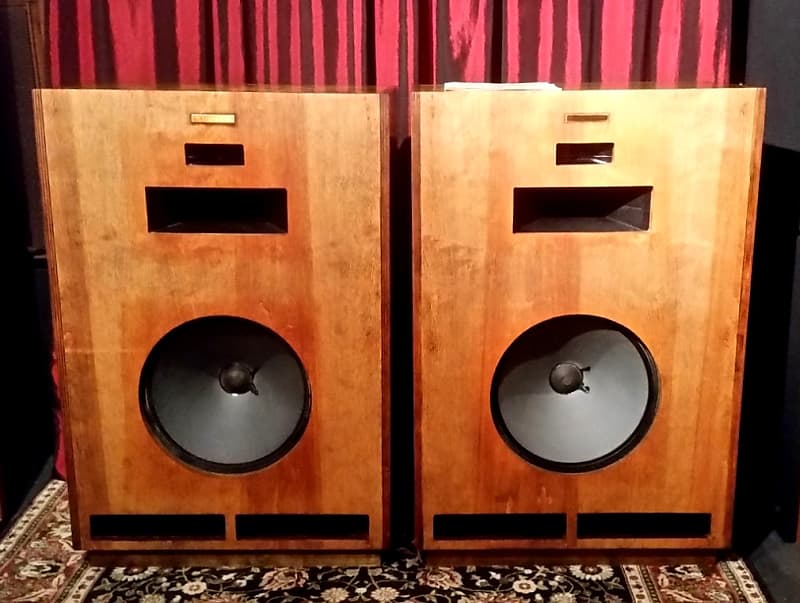
There was also a dedication to city ordinances, though David's home wasn't officially a club. Even in the wake of the Stonewall uprising, gay club patrons had been treated as second-class citizens. Low-grade cocktails, poor hygiene infrastructure, and lack of fire exits were overlooked by authorities on the assumption that attendees feared retribution. In some cases, well-known or wealthier clients were blackmailed if they wanted to stay closeted.
Throughout The Loft's history Mancuso insisted that any attendee, gay or straight, sober or in an altered state of mind, regardless of race, should be free to be carried away by the music with no concerns about their well-being.
Douglas Sherman, a Loft attendee since 1979, said it even extended to people they hoped wouldn't show up: "We were setting up for the evening and David had me run out to buy some red buckets to fill with sand, to hang along the wall. It was about actual fire safety but also sending a message. Firemen risk their lives saving people, and if they showed up to check for violations we wanted them to see that we were thinking of them."
No clocks or mirrors were allowed. Time was deemed meaningless, and the latter could make a person feel self-conscious when they were meant to let go. Alcohol wasn't served, but food and refreshments were included in the entrance fee. The common thread was all of the attendees had a deep connection with music and an interest in hearing it in its purest form.
Sherman explains that the arc of the evening, to this day, is supposed to mimic an acid trip. "People arrive and are greeted with mellower music. As the night goes on the music ramps up and sort of peaks, then there is a coming down period." It was inspired by Leary's take on The Tibetan Book of the Dead's three Bardos. Murphy, who has been an attendee, organizer, and selector at the Loft since the mid-'80s, adds, "It's kind of a microcosm, trying to be an ideal vision of society, which relates to what people experience when they take LSD."
Sherman would stay for the duration, and often arrived early on Saturday, sometimes to the mild annoyance of people setting up, so eventually they gave him odd jobs. This guaranteed he'd never miss the first song of the night. In time, after earning trust, he became a music selector, organizer and one of Mancuso's close friends.
"This all took place in David's home, so people would take turns resting on his bed, or spending time in darker corners of his place, that only held a few people, then they'd return to the party, ready to continue. Some would stay until 4 pm Sunday afternoon," Sherman recalls.
Murphy adds, "David wanted people to listen for eight or 12 hours and not come out with their ears ringing. He said he practiced 'safe sound,' which was yet another gentle approach that protected the guest, because once you lose your hearing, you can't get it back."
All of this made Mancuso more like an MC of a sonic cocktail party rather than a DJ, which is why, even today, the music selectors at the parties eschew the term in favor of "Musical Host." Leary preached the absolute importance of "set and setting" to his disciples, and it had clearly influenced Mancuso's vision of The Loft.
Up to this point, New York was a city with dance clubs, plenty of which catered exclusively to a gay clientele. It wasn't entirely unique in that regard. As the '70s emerged, however, it became the city for dance clubs, unchallenged, for much of the decade, and setting the bar globally. Between the time of Mancuso's incalculably influential first Loft parties and the disco-as-we-know-it years, there was a liminal period where more clubs were opening, still underground, but resembling what would soon come after.
Better Days, Galaxy 21, SoHo Club, 12 West, Reade Street, and the Tenth Floor, to name a few, were writing the script for the next phase. Legendary DJ Nicky Siano opened The Gallery with his brother, and cut his teeth there. Its influence can't be overstated, and merits an article of its own. This was the world David DePino lived in; he was hitting all the clubs, and he was a Loft baby.
DePino remembers:
"You know, when I think back I go, What the hell was my mother thinking? I looked 20, and had a mustache, but I was 14. I come from Mulberry Street, a white, Italian neighborhood, and my family was all mafia. My sister was six years older than me, and took cash at the door at some clubs my cousin's family owned. I told my mama I wanted to go. 'Alright, your sister will take you so you'll be safe,' she said. I went and I was hooked. By 16 I was working at Sanctuary, which didn't even open until midnight! My mom asked me what the clubs were like. What did I do every night? I told her they were safe and she said if you ever do anything to embarrass us I'll go down to the club with a placard that says 'I'M DAVID'S MOM' on it, and I was like, 'Don't you dare!' Looking back I find it funny, but it terrorized me as a child. I first went to the Loft when I was 15 and immediately noticed the sound was very pure—Mancuso didn't blend songs, and there was no mixer to speak of. What the needle picked up is what the speakers put out. The Sanctuary was in an old church, so [the DJ] Francis Grasso had the organ behind him. He'd hit the keys, and add to the music sometimes. David was a purist, cared deeply about sound, and the system at The Loft reflected that."
In 1977, as things continued to fall into place in the club community, dance culture was growing, and pride and confidence was rising in the wake of Stonewall, a new idea for a club was emerging at a decommissioned parking garage at 84 King St., which had also had a short stint as the Chameleon Club. It represented a communion of ideas between a DJ, Larry Levan, who had been a Loft regular; Mancuso's old friend Richard Long, who was now designing soundsystems; and owner Michael Brody.
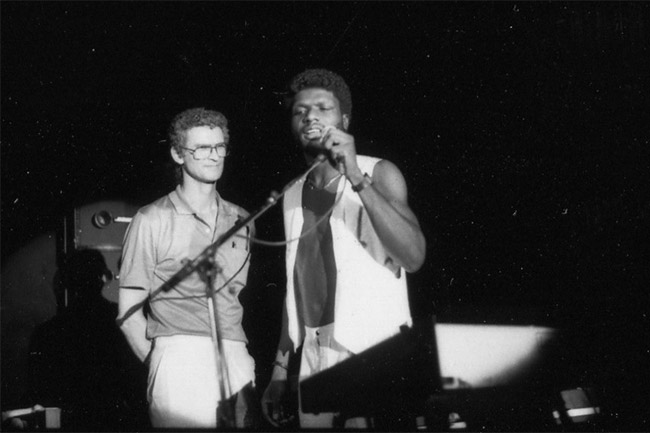
During the build-out phase, "construction parties" were held as a way to fine-tune the club and generate some cash flow. By coincidence, or by design, the official opening was Valentine's Day weekend, 1978. Levan had come from The Continental Baths, SoHo Club, and Reade St, ultimately landing at the Gallery, working alongside Siano, and Frankie Knuckles.
His reputation was growing, as was his deep understanding of how to build sets, effortlessly moving from Philly soul to Jamaican music, with its soundsystem tradition. Now it was time for Brody to build a club around him. DePino recounts:
"Larry Levan and Richard Long designed a soundsystem first, and then the room was built to accommodate it, which had never happened before that I know of. David Mancuso had to cater his system to a room. Paradise Garage was a 20,000-square-foot space that was going to be sectioned off. The room where they'd build the dance floor, and how they'd do that, was designed around the kind of soundsystem that Larry wanted. The room was built for the sound, the sound was put in the room. Walls were built on two-inch tracks, so they moved with the bass. The floor was built on three-inch risers, to cushion your feet over a long night. That's what's wonderful about having a raw space and building it from scratch. Having an owner willing to spend the money to accommodate all of these aspects, and Larry's ideas were unheard of. Michael Brody was not greedy. If it was a good year, he'd invest in making the club better. He didn't just stick it in his pocket."
Tim Lawrence, author of the extremely comprehensive Love Saves The Day: A History of American Dance Music Culture, 1970-1979, says, "Larry Levan was hugely influential when it came to the development of the Garage system. I don't know if he had quite the same influence over the system at the Garage as David did over his at the Loft, but it would have been close. He would make requests to Long and others, after which the engineers would seek to introduce his requests. As a symbol of his devotion to David and the Loft, his original idea had been for Alex to oversee the Garage system and for it to be built around Klipschorns, but in the end Larry decided that the space needed more power than they could generate."
During this ongoing conversation between DJ and tech, fidelity continued to be paramount, but some new ideas grabbed hold as well.
"The Garage had a great system that would become the standard on which modern club systems are based, not Mancuso's," says Murphy. "Larry was a Loft devotee. He wanted a certain kind of Loft quality and clarity, but also a heavy bottom and punch. It was louder, and used subwoofers to enhance the bass for that physical experience, whereas Mancuso's was about having the music more floaty than punchy."
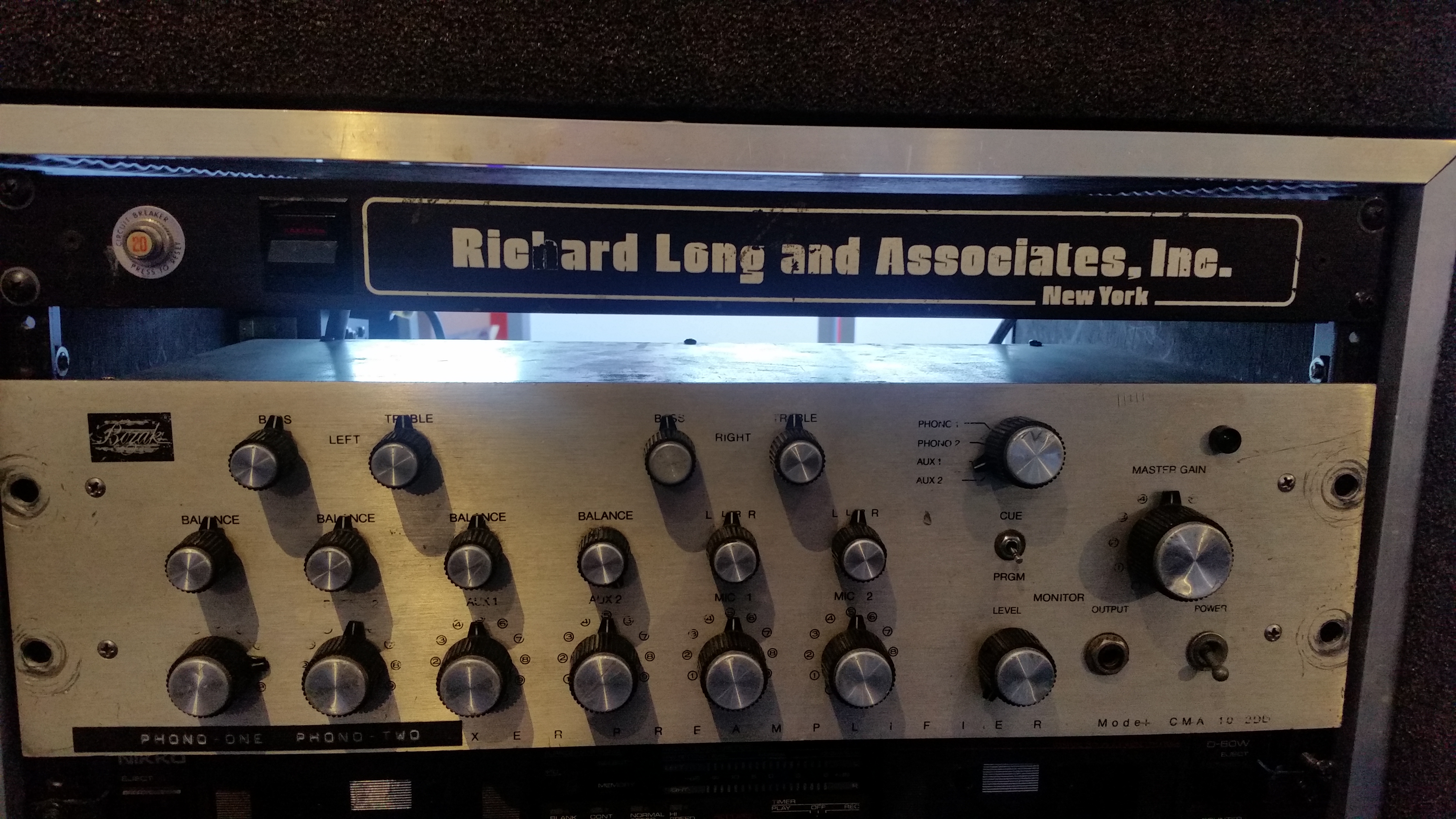
Indeed, Long developed the "Levan Horn" specifically to deliver more bass. Bernabeu adds, "Before the Garage there were no clubs with 10-foot-high stacks and massive bass cabinets. The technology didn't exist yet. There were no manufacturers making it, so they had to design it all. The Garage is where Richard debuted all his newest innovations."
With these developments came a different kind of interaction, and it became clear that, as with Mancuso, systems often acted as an extension of the DJ, like a musician and their instrument.
"There is a symbiotic relationship between the DJ and their system," says DePino, "Nicky Siano, at The Gallery, was bold, like his system. Larry was a product of both Siano and Mancuso. He wanted quality sound like the Loft, but his personality was big, and over the top, so the system reflected that too. You went to hear what Mancuso, Levan, and Siano wanted you to, not just what was on the radio, and they wanted you to hear it the way they thought it should be presented, through the systems they developed to do that."
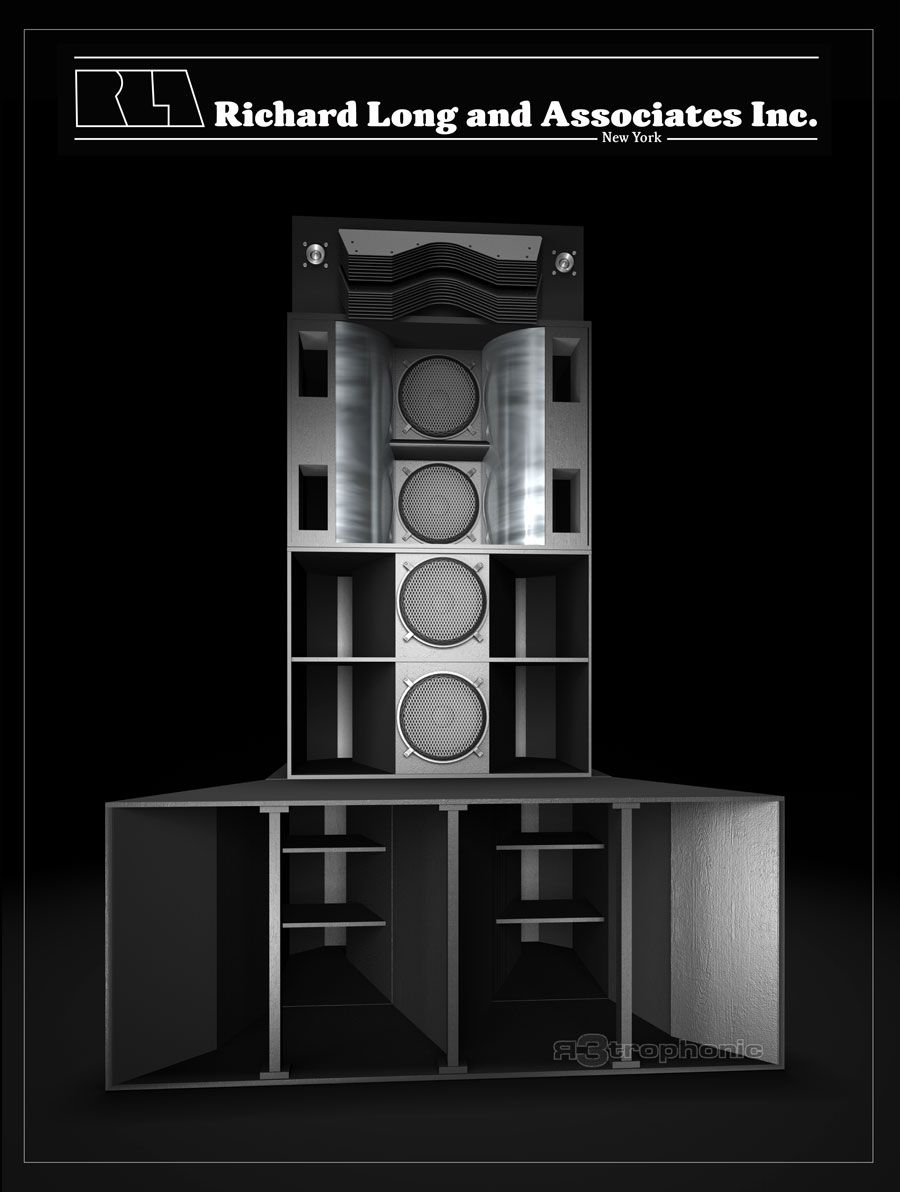
It should be stated that while the much better-known Studio 54 often gets mentioned in the same breath as Paradise Garage in any "Golden Age of Disco" pieces, the two had very little in common, apart from opening at roughly the same time and having Richard Long and Associates systems. Incidentally, Alex Rosner almost got the bid, but inadvertently missed out because he wasn't willing to "discuss something" when his phone rang at 3 o'clock one morning.
In the image of the Loft's invite-only policy, Paradise Garage required a membership, to guarantee people had the right spirit and dedication, but the overarching philosophy was still squarely rooted in inclusiveness. The Garage wanted to avoid attention. DePino has many stories about efforts to keep it out of the press. 54, on the other hand, invited it.
Tim Lawrence explains, "Carmen D'Alessio, who was hired early on to help shape Studio 54, had been to the Loft and initially attempted to introduce aspects of Mancuso's invite system. Meanwhile, [one of Studio 54's owners Steve] Rubell had been frequenting some downtown spaces, including the Gallery. Having sampled the musical and communal intensity of them he hoped to integrate aspects into Studio 54, and even hired Nicky Siano. However, there was ultimately little to connect it to downtown spaces such as the Loft and the Gallery."
In short time, Lawrence says, it "became a place renowned for its door queue, exclusionary entrance policies, and emphasis on celebrity culture," even though the person in charge of the door list had come up through the Loft.
As Siano told The Vinyl Factory, "I just cannot condone that kind of door policy, anywhere, anyhow, anyway, it's not right. [Mancuso] did invitations, the Paradise Garage did memberships. There was a way to do it without offending everyone who came and making them feel like shit. It was cool if you got in [to 54], but it was really fucked up if you were left outside all night," referring to the legions of people who lined up to get a glimpse of modern Rome that never had a chance of getting in.
54 tried to recruit Levan, who decided they weren't "ready for him yet." Additionally, Rubell's policy was to specifically not focus on the DJ. In the many histories of Studio 54, the person who successfully kept the dance floor alive, Richie Kaczor, is rarely even mentioned. Siano and Rubell butted heads often during his short tenure, and was reputedly fired for, among other things, playing Kraftwerk's "Trans Europe Express." Both the song and Siano would go on to be massively influential.
At the Garage, aka "Gay Rage," Levan carried on the Loft tradition of making sure everything was just so for the evening's guests. No alcohol was served, and refreshments were included in the door fee. There's the legend of him stopping the music, getting a ladder and polishing the mirror ball. It's hard to fathom something like this happening at any of the glamor spots, but the patrons waited patiently, and even applauded when he was finished. He had absolute freedom, and used it to start blending instrumental versions of songs, remixing in the moment, one of many common practices that he pioneered.
It's a large part of the reason the 12" single exists at all. They contain multiple versions of a song, and have better fidelity, owing to not having to worry about groove width, but the cost per song, per pressing, was hard for some to justify. The success of Larry's version of "I Got My Mind Made Up" by Instant Funk changed that though. Fidelity, the system, the DJ, and what delighted a crowd all worked in concert to ultimately standardize a format. It represented even more changes from the Loft mentality, though, which steered clear of mixing, and played songs in their entirety.
Some people saw all of this as the next chapter being written, however "Mancuso believed that the system, while impressive, sacrificed certain aspects of musicality," says Lawrence. He also disliked that, by 1980, Fridays and Saturdays became "gay" and "mixed" nights, respectively. "David's view was, we're all human beings, why can't we dance together?"
Levan's power was such that a song endorsement translated to sales. If he played a cut five times in a night it was guaranteed there would be a line at the record shops the next day, who often didn't even have it in stock, owing to its newness. Furthermore, the clubs and their systems influenced how the music that would eventually be played on them was produced.
There are stories of Klipschorns and dancers being hauled into the studio to give it a club feel, and DJs created the tradition of the remix by becoming producers in the studio. Michael Brody's life partner, Mel Cheren, impresario of the genre-defining West End record label encouraged this. Levan showed an aptitude for it, and it became a new calling card for François Kevorkian, who had already spun records at the Loft, the Garage, and Studio 54. Many times these remixes were test-driven on club systems to see how they'd perform before they were pressed.
DePino often had to stand guard over Levan's DJ booth. "'Can you get Larry to play this before we master it to know if the EQ is perfect?' It didn't happen often at The Garage, because they had to get through me first. Even if they got to Larry he often wanted to hear it before he'd play it in the club, unless they had his trust. If François came to him with something it would be the next record he played."
The practice continued, DePino says: "In the '80s, when I was at Tracks, David Cole from C+C Music Factory would come to me in the middle of the night and go, 'I'm working in the studio right now. I need to hear what this sounds like on a big system.' I'd play it, and he'd go 'okay, thanks David!' He'd leave, and an hour later, he'd come back and go, 'Can you play it again?' It sounded completely different, because he re-EQ'd it based on what he'd heard."
Club culture would continue to explode, not only in New York, but around the world. Even as the '80s rolled in and the well-documented disco backlash kicked into gear, the Garage continued to sow its cultural seeds. It maintained a reputation as a place that felt more "real" than most, with upcoming visual artists like Keith Haring and Jean-Michel Basquiat passing through, as well as new crops of people who wanted to dance to handpicked gems, even as AIDS devastated the gay community.
It would eventually close in 1987, having drawn up the blueprint for essentially every dance club that would follow, giving birth to a genre, and setting the bar for what a DJ or club goer could consider a perfect night. David DePino worked and DJ'ed there for its entire existence.
Alex Rosner still installs systems, though he's moved on to mainly kitting out churches. Fitting, as The Sanctuary's Steve D'Acquisto often compared early clubs to houses of worship. By the time of Richard Long's premature death, in 1986, he had installed over 300 systems around the world, most of them in Europe and South America.
"From making the Loft system work to realizing Mancuso's ideas, like tweeter arrays that hang above the crowd, Alex's influence can't be overstated," says Bernabeu. "Their ideas, and the cabinets Richard designed, even shaped the way records would be produced and mixed, which launched a new style of music. In one way or another, though, it goes back to Alex. He is the father of sound-driven spaces."
At 7 pm, in February of this year, on the 50th anniversary of the first Love Saves the Day party, I was in Midtown eating Szechuan with Charlotte von Kotze, who was imparting upon me all of the things the Loft stood for, how every person involved, from organizer to attendee, had a deep connection with music, and its impact on her colleagues at Brooklyn's Lot Radio. I learned about Barbie Bertisch and Paul Raffaele's Love Injection 'zine, Murphy's Lucky Cloud parties and Classic Album Sundays. How Douglas Sherman, Takaya Nagase, and Yuji K had modeled their Joy Collective in the Loft's tradition, and that Loft music compilations were released by Murphy and her mentor, Mancuso, on the Nuphonic label.
Fascinated by what I was hearing, I imagined a tribe of kind tastemakers, who use terms like "milieu" and "oeuvre" earnestly, dancing together, to the best music you've never heard. She looked at her phone, looked back up at me and said, "Do you want to go?" We were in a cab 10 minutes later.
Through a connect we had been added as member's guests with the understanding that we'd jibe with the rules. Charlotte had been to a few before, and answered any questions I had. Soon I found myself in a repurposed banquet hall. Having moved from 645 Broadway, to 99 Prince street, to the downsized Alphabet City locations, over half a century, it finally landed at the location we walked into, where it's been held longer than any other, though only a few times a year these days. There was no age limit, no dress code, a diverse mix of people, and the sound was phenomenal. I asked Murphy about it later.
She explained:
"It's the simplest sonic path from the record, to the ear. No compression, pitch control, or EQ is used because of a commitment to the artist's original vision. It's a tricky system to play on, really, because there's no enhancement anywhere along the food chain. Originally he used Mitchell A. Cotter turntable bases with Fidelity Research FR-66 tonearms, and Koetsu cartridges. Now it starts with Technics SL110s with Koetsu tone arms, Koetsu Urushi cartridges, then the preamp is Mark Levinson ML-1, which is very simple and pure. There are Phono 1 and Phono 2 inputs, no mixer, because any additional equipment means more circuitry, which is a weak link. The amps are Class A Mark Levinson, then it goes to the Klipschorns."
I walked into the packed main room and politely eased my way to the center of the dancefloor for just a moment, so as not to disturb anyone who had got there first. As I admired the sound of the seven-speaker system, I looked up at a giant net full of balloons that would drop on the crowd much later in the evening. I remembered staring up at it, later, when Douglas Sherman told me the story about how his first job at the Loft, long before becoming a Musical Host, was to be in charge of the balloons, removing shrunken and deflated ones, because everyone pitches in to do needed jobs.
As I made my way back to the edge, through a sea of smiles and, more than likely, people I would eventually interview for this piece, the second thing I noticed was everyone could easily have conversations. I had plenty, throughout the night, with people from all walks of life, including some who have been regulars for 50 years. I met journalist Piotr Orlov, who summed it up for me later.
"The entirety of the environment is important. The energy in the room flows between audience and DJ, and the soundsystem fits into that equation as the conduit. It did at places like Paradise Garage as well," he says. Then he quoted The Grateful Dead, with an academic tone in his voice, "You know, in a 'the music plays the band' sense."
It reminded me of something Alex Rosner said, when asked about the absolute commitment to the simplest, highest quality signal path for environments like this: "Say you have five panes of glass, each one representing a component. If they are absolutely clean you can see through all of them. If even one pane is filthy the whole view is blocked." At the Loft, the attendees are the sixth pane of glass and there's not a speck of dust on it.
It took awhile for it to sink in what I'd experienced. It all happened so fast that it's kind of a blur, but I left with the only impression that really matters: I had gone in with the common notion that dance spaces were mostly packed with vain people getting assaulted by over-hyped bass, to understanding the "oneness" aspect of it. François Kevorkian once commented on clubs that don't get this concept when he said, "They don't understand that it's the crowd that makes the venue, not the furniture." I hope to go to the Loft again, one day, so I can be more in the moment, and watch the Musical Hosts more carefully, observing Mancuso's influence.
DePino sums it up nicely: "One day, about 15 years ago, my phone rang and the journalist on the other end said, 'Oh my god am I speaking to David? You're a legend!' David Morales would stay with me sometimes so I asked if that's who they were trying to reach. They said, 'No! DePino!' I said, 'Look, there is only one legendary "David" I know and his last name is "Mancuso."' He started this whole thing and there can only be one first domino."
Author's note: I've barely scratched the surface, here. An entire essay could be devoted to how Judy Weinstein's record pool drove a lot of what happened in the '70s. There are deep dives into this era at redbullmusicacademy.com about the people mentioned, plus other key players like Steve D'Acquisto, Michael Cappello, Walter Gibbons, many of whom were Loft alum, and details on how Frankie Knuckles—who had DJ'ed with Levan at the Continental Baths—moved to Chicago to set up shop.
Shorty's site, sbsslammer.com, offers a detailed, inside look at the components used to design modern clubs. I highly recommend Tim Lawrence's books. Special thanks to Charlotte Von Kotze, the people quoted in this piece, who were beyond generous with their time, and especially Paul Rafaelle, who was the ultimate linchpin. As Piotr Orlov said about Paul's commitment to archiving, "He thrust himself into this stuff and the next thing you know he was in the middle of it, dragging it into the future. In that way he's the consummate New Yorker. He recognizes that this is our folk music."
